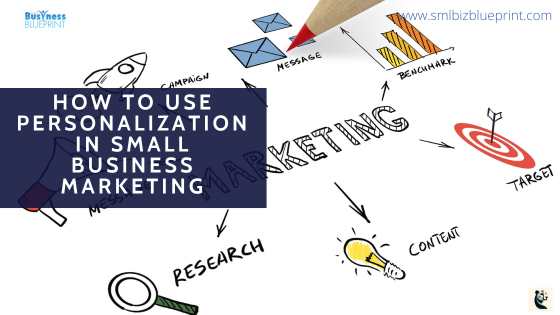Today, personalisation has become a key strategy for enhancing customer loyalty and satisfaction.
This post will explore how businesses can leverage personalisation to create more engaging and relevant customer experiences.
Personalisation involves tailoring products, services, and interactions to meet customer preferences and behaviours. This blog post will delve into the importance of personalisation, effective methods for gathering and utilising customer data, and the best tools and technologies available for creating personalised experiences.
We’ll also discuss advanced personalisation techniques, how to measure the success of these efforts and practical tips for integrating personalisation into your marketing campaigns.
By understanding and implementing these strategies, businesses of all sizes can foster deeper connections with their customers, increasing loyalty and long-term success.
Whether you’re a small business owner looking for low-cost personalisation methods or a larger enterprise seeking to enhance customer engagement with AI-driven personalisation, this comprehensive guide is designed to cater to your needs.

#1 Understanding Personalization in Business
What is Personalization in the Context of Business?
Personalisation refers to tailoring products, services, and interactions to meet individual customers’ unique preferences and behaviours. Unlike a one-size-fits-all approach, personalisation aims to deliver a more relevant and engaging experience for each customer, enhancing their overall satisfaction and loyalty.
For instance, Amazon’s product recommendation system is a prime example of effective personalisation. By analysing customers’ previous purchases, browsing history, and other behavioural data, Amazon can suggest products most likely to interest each customer.
This improves the shopping experience and drives higher sales and customer retention.
Personalisation creates a more engaging and relevant customer experience, increasing satisfaction and loyalty.
The Importance of Personalization for Customer Satisfaction and Loyalty
Personalisation is not just a buzzword; it has a tangible impact on customer satisfaction and loyalty. According to a study by Epsilon, 80% of consumers are more likely to purchase when brands offer personalised experiences.
This highlights personalisation’s critical role in influencing purchasing decisions and building long-term customer relationships.
Moreover, personalised emails have been shown to generate up to six times higher transaction rates compared to non-personalized ones. By addressing customers by their names and offering relevant product suggestions or discounts, businesses can significantly enhance the effectiveness of their email marketing campaigns.
A compelling example of personalisation in action is Starbucks’ rewards program. By tracking individual purchase histories and preferences, Starbucks can offer tailored rewards and promotions, encouraging repeat visits and fostering a loyal customer base.
#2 Gathering and Utilizing Customer Data
Effective Ways to Gather Data for Personalization
Businesses must gather accurate and relevant customer data to implement successful personalisation strategies. This data forms the foundation for creating tailored experiences that resonate with individual customers.
Methods for Collecting Customer Data:
- Surveys and Feedback Forms: Ask customers about their preferences, needs, and feedback. This method provides valuable insights straight from the source.
- Website Analytics: Use tools like Google Analytics to track customer behaviour on your website, including pages visited, time spent on each page, and interactions with specific elements.
- Social Media Interactions: Monitor and analyse customer interactions on social media platforms. This can provide insights into customer interests, sentiments, and preferences.
- Purchase History: Analyze past purchase data to understand customers’ preferred products or services. This information can be used to suggest similar or complementary products.
- Customer Service Interactions: Record and analyse interactions with customer service representatives to identify common issues, preferences, and feedback.
Best Practices for Data Collection:
- Transparency: Communicate to customers why you are collecting their data and how it will be used to enhance their experience.
- Consent: Always obtain explicit consent from customers before collecting their data.
- Accuracy: Ensure the data collected is accurate and up-to-date. Regularly update your records to reflect any changes in customer preferences or behaviour.
Collecting accurate and relevant data is crucial for effective personalisation. Businesses can create more tailored and engaging experiences by understanding customer preferences and behaviour.
Ensuring Customer Data Privacy and Security
In the era of data breaches and privacy concerns, businesses must prioritise customer data privacy and security. Mishandling data can lead to a loss of customer trust, legal repercussions, and significant damage to a brand’s reputation.
Importance of Data Privacy and Security:
Trust: Customers are more likely to share their data if they trust it will be handled securely and responsibly.
Legal Compliance: Adhering to data protection regulations such as the General Data Protection Regulation (GDPR) and the California Consumer Privacy Act (CCPA) is mandatory to avoid hefty fines and legal issues.
Strategies for Maintaining Data Privacy and Security:
Robust Security Measures: Implement strong security protocols, including encryption, secure access controls, and regular security audits.
Data Minimization: Collect only the data that is necessary for personalisation purposes. Avoid gathering excessive or irrelevant information.
Transparency and Communication: Inform customers how their data will be used and protected. Provide them with options to control their data, such as opting out or updating their preferences.
Compliance with Regulations: Stay up-to-date with data protection regulations and ensure your data handling practices comply with all relevant laws.
Protecting customer data is essential for maintaining trust and enabling effective personalisation. By implementing strong security measures and adhering to data protection regulations, businesses can create a secure environment for personalised experiences.
Examples:
Transparency: A company informs its customers that their purchase history will be used to provide personalised product recommendations.
Robust Security Measures: An e-commerce site uses SSL encryption to protect customer data during transactions.
By gathering and utilising customer data effectively while ensuring privacy and security, businesses can lay a strong foundation for successful personalisation strategies.
The following sections will delve into specific personalisation methods and the tools and technologies available to implement them.

#3 Implementing Personalization Strategies
Low-Cost Personalization Methods for Small Businesses
Personalisation doesn’t have to be expensive. Small businesses can implement effective personalisation strategies without significant investment.
Here are some low-cost methods to consider:
Techniques for Low-Cost Personalization:
Personalised Emails: Use email marketing tools to send personalised emails based on customer preferences and behaviours. Address customers by their name and tailor the content to their interests.
Example: A local bakery sends personalised birthday offers to customers based on the birth dates they provide.
Targeted Social Media Ads: Leverage social media platforms’ targeting capabilities to show ads to specific customer segments based on their interests and behaviours.
Example: A boutique targets ads for new arrivals to customers who have previously shown interest in similar products.
Personalised Website Content: Use website analytics to display personalised content or product recommendations on your site based on visitors’ previous interactions.
Example: An online bookstore suggests books similar to those a visitor has previously viewed or purchased.
Loyalty Programs: Implement a loyalty program offering personalised rewards and incentives based on customer purchase history and preferences.
Example: A coffee shop offers a free drink to customers after their 10th visit, with the type of drink tailored to their usual order.
Personalisation doesn’t require a large budget. Small businesses can use creative, low-cost methods to provide personalised experiences and enhance customer engagement.
Advanced Techniques for Data-Driven Personalization
Advanced data-driven techniques can offer more sophisticated and effective strategies for businesses looking to enhance personalisation.
Advanced Data-Driven Techniques:
Segmentation: Divide your customer base into segments based on shared characteristics such as demographics, purchase behaviour, or interests. Tailor your marketing efforts to each segment.
Example: A fashion retailer segments its email list by age group and sends different promotions to each group based on their preferred styles.
Predictive Analytics: Use predictive analytics to anticipate customer needs and behaviours. This can help in making proactive recommendations and offers.
Example: An e-commerce platform uses predictive analytics to suggest products a customer will likely buy based on past purchases and browsing history.
Dynamic Content: Implement dynamic content on your website or emails that changes based on the user’s behaviour or profile. This creates a more relevant and engaging experience.
Example: A travel website displays different vacation packages on the homepage based on the user’s previous searches and bookings.
Recommendation Engines: Use recommendation engines to suggest products or content to customers based on their preferences and behaviours.
Example: Netflix uses a recommendation engine to suggest shows and movies that align with a user’s viewing history and ratings.
Advanced data-driven techniques can significantly enhance the effectiveness of personalisation efforts, leading to higher customer satisfaction and increased sales.
#4 Tools and Technologies for Personalization
Common Tools and Technologies Used for Personalized Customer Experiences
Businesses can leverage various tools and technologies to implement personalisation strategies to create tailored customer experiences effectively.
Here are some of the most commonly used tools and their benefits:
Customer Relationship Management (CRM) Systems:
CRMs, such as Salesforce, HubSpot, and Zoho CRM, help businesses manage and analyze customer interactions and data throughout the customer lifecycle.
These systems provide a comprehensive view of customer interactions, enabling personalised communication and targeted marketing efforts.
Using a CRM, a business can track customer purchase history and send personalised follow-up emails with product recommendations.
Personalization Platforms:
Platforms like Dynamic Yield, Optimizely, and Adobe Target offer advanced personalisation capabilities, including A/B testing, user segmentation, and dynamic content delivery.
These tools allow businesses to create and test personalised experiences on their websites and mobile apps.
An online retailer uses a personalisation platform to display different homepage banners based on visitors’ browsing history.
Email Marketing Software:
Tools like Mailchimp, SendinBlue, and Constant Contact enable businesses to create and send personalised email campaigns.
These platforms offer features like audience segmentation, personalised templates, and automated email workflows.
Example: A restaurant uses email marketing software to send personalised birthday discounts to customers based on their birth dates.
Recommendation Engines:
Technologies like Amazon Personalize, Recombee, and Dynamic Yield’s recommendation engine use machine learning algorithms to suggest products or content based on user behaviour.
These engines can significantly enhance the user experience by offering relevant suggestions.
Example: A streaming service uses a recommendation engine to suggest movies and TV shows based on a user’s viewing history.
Effective personalisation requires leveraging the right tools and technologies. These tools help businesses analyse customer data, segment audiences, and deliver personalised experiences.
The Role of AI in Customer Personalization
Artificial Intelligence (AI) and machine learning transform how businesses personalise customer experiences.
Here’s how AI enhances personalisation efforts:
AI-Driven Personalization:
AI analyses vast amounts of data to identify patterns and predict customer behaviour. This enables real-time personalisation and more accurate recommendations.
Netflix uses AI algorithms to analyse viewing habits and recommend content tailored to individual preferences.
Benefits of AI in Personalization:
Scalability: AI can process large datasets quickly, making it possible to simultaneously personalise experiences for millions of customers.
Example: An e-commerce platform uses AI to personalise real-time product recommendations for each visitor.
Accuracy: Machine learning algorithms improve as they learn from new data, making increasingly accurate predictions and recommendations.
Example: A fashion retailer uses AI to predict trends and suggest outfits based on customer preferences and purchase history.
Efficiency: AI automates many aspects of personalisation, freeing up time and resources for other business activities.
Example: A financial services company uses AI to automate personalising financial advice and product offers.
AI and machine learning are powerful enablers of sophisticated and scalable personalisation. By leveraging AI, businesses can deliver highly relevant and timely experiences that drive customer satisfaction and loyalty.
By incorporating these tools and technologies, businesses can enhance their personalisation efforts, creating more engaging and relevant customer experiences.
The next section will focus on measuring the success of these personalisation efforts and identifying key metrics to track.

#5 Measuring the Success of Personalization Efforts
Key Metrics for Measuring Personalization Success
Tracking and analysing key performance indicators (KPIs) is essential for evaluating the effectiveness of your personalisation strategies. These metrics provide insights into how well your personalisation efforts resonate with your audience and contribute to your business goals.
Key Metrics to Track:
Conversion Rate:
The percentage of visitors who complete a desired action, such as purchasing or signing up for a newsletter.
A higher conversion rate indicates that your personalised experiences effectively drive customer actions.
Example: An online retailer tracks the conversion rate of personalised product recommendations to measure their impact on sales.
Customer Retention Rate:
The percentage of customers who continue to engage with your business over a specified period.
High retention rates suggest that your personalisation strategies foster customer loyalty and long-term relationships.
Example: A subscription service monitors customer retention rates to assess the effectiveness of personalised renewal offers.
Average Order Value (AOV):
The average amount spent by customers per transaction.
An increase in AOV indicates that personalised recommendations encourage customers to spend more.
Example: An e-commerce platform measures AOV to determine the impact of personalised upsell and cross-sell suggestions.
Click-Through Rate (CTR):
The percentage of users who click a personalised link or call-to-action (CTA).
A high CTR reflects that your personalised content is relevant and engaging to your audience.
Example: A marketing team tracks CTR on personalised email campaigns to evaluate their effectiveness.
Customer Satisfaction Scores:
Net Promoter Score (NPS) or Customer Satisfaction (CSAT) ratings measure overall customer satisfaction.
Positive satisfaction scores indicate that your personalisation efforts are enhancing the customer experience.
Example: A company uses NPS surveys to gauge customer satisfaction with personalised service recommendations.
Measuring the right metrics helps businesses understand the impact of their personalisation efforts and make data-driven improvements. By tracking KPIs like conversion rate, customer retention, AOV, CTR, and satisfaction scores, you can assess the effectiveness of your personalisation strategies and identify areas for enhancement.
By measuring the success of your personalisation efforts and learning from successful examples, you can refine your strategies to deliver even more impactful and engaging customer experiences.
The final section will discuss integrating personalisation into your marketing campaigns to maximise customer engagement and conversions.
#6 Integrating Personalization into Marketing Campaigns
Personalised Marketing Strategies for Enhanced Customer Engagement
Personalised marketing strategies are essential for creating meaningful customer connections and driving higher engagement.
Here are several techniques that can help businesses enhance customer engagement through personalised marketing:
Techniques for Personalized Marketing:
Personalised Email Marketing:
Sending targeted emails that address the recipient by name and offer content or product recommendations based on their preferences and behaviour.
Personalized emails have higher open and click-through rates compared to generic ones.
Example: A clothing retailer sends personalised emails featuring new arrivals that match the recipient’s past purchases and browsing history.
Dynamic Website Content:
Displaying different content to users based on their profile, behaviour, or preferences.
Increases relevance and engagement by showing visitors content most likely to interest them.
Example: A news website personalises its homepage to show articles aligning with visitors’ reading habits.
Retargeting Ads:
Showing targeted ads to users who have previously interacted with your website or app, reminding them of products or offers they viewed but didn’t purchase.
Retargeting ads can significantly increase conversion rates by re-engaging potential customers.
Example: An online store displays retargeting ads on social media to users who abandoned their shopping carts.
Personalised Social Media Interactions:
Engaging with customers on social media platforms in a personalised manner, such as responding to their comments or sending targeted messages.
Builds stronger relationships with customers and increases brand loyalty.
Example: A beauty brand responds to customer queries on Instagram with personalised product recommendations based on their skin type and preferences.
Personalised marketing strategies can significantly boost customer engagement and brand loyalty by delivering relevant and tailored content. Techniques like personalised emails, dynamic website content, retargeting ads, and personalised social media interactions effectively enhance customer experiences.
How to Integrate Personalization into Your Marketing Efforts
Integrating personalisation into your marketing efforts requires a systematic approach.
Steps to Integrate Personalization:
Collect and Analyze Customer Data:
Gather data from various sources, such as purchase history, website analytics, social media interactions, and customer feedback.
Collect and analyse data using tools like Google Analytics, CRM systems, and social media analytics.
Understanding your customers’ preferences and behaviour is the foundation of effective personalisation.
Segment Your Audience:
Divide your customer base into segments based on shared characteristics, such as demographics, behaviour, or purchase history.
Use your CRM or email marketing software to create segments and tailor your messages accordingly.
Audience segmentation allows for more targeted and relevant marketing efforts.
Create Personalized Content:
Develop content that speaks directly to each segment’s needs and interests, such as personalized product recommendations, targeted offers, and customized messages.
Use dynamic content tools to create and deliver personalised experiences on your website and in emails.
Personalised content enhances engagement by addressing individual customer needs and preferences.
Use Personalization Tools:
Implement tools and technologies that facilitate personalisation, such as email marketing platforms, personalisation engines, and AI-driven analytics.
Integrate these tools with your existing marketing infrastructure to automate and streamline personalisation efforts.
Leveraging the right tools is essential for scalable and effective personalisation.
Continuously Test and Optimize:
Regularly test different personalisation strategies and measure their impact using key performance indicators (KPIs) such as conversion rate, customer retention, and engagement metrics.
Use A/B testing and analytics to identify what works best and refine your approach based on data-driven insights.
Continuous testing and optimisation ensure that your personalisation efforts remain effective and relevant.
Integrating personalisation into marketing efforts is a systematic process that involves collecting and analysing data, segmenting your audience, creating personalised content, using the right tools, and continuously testing and optimising your strategies.
You can deliver highly relevant and engaging experiences that drive customer satisfaction and conversions by systematically integrating personalisation into your marketing campaigns.
Conclusion
Personalisation in business is no longer just an option—it’s necessary for companies looking to enhance customer loyalty, satisfaction, and overall experience.
Throughout this blog post, we’ve explored the multifaceted aspects of personalisation, from understanding its core principles to effectively gathering and utilising customer data, implementing both low-cost and advanced personalisation strategies, and leveraging the right tools and technologies.
Summary:
- Understanding Personalization: Personalization tailors experiences to individual customer preferences, significantly improving engagement and loyalty.
- Gathering Data: Effective data collection through surveys, analytics, and feedback is crucial for accurate personalisation.
- Data Privacy: Ensuring customer data privacy and security builds trust and enables responsible personalisation.
- Personalisation Strategies: Implementing low-cost methods like personalised emails and advanced techniques such as predictive analytics can drive significant results.
- Tools and Technologies: Personalization efforts can be enhanced using CRM systems, personalisation platforms, email marketing software, and AI-driven recommendation engines.
- Measuring Success: Tracking key metrics like conversion rates, customer retention, and satisfaction scores helps assess the effectiveness of personalisation strategies.
- Integrating into Marketing: Personalized marketing campaigns, dynamic content, and targeted social media interactions can significantly boost customer engagement and conversions.
Personalisation transforms how businesses interact with customers, fostering deeper connections and driving long-term success.
By implementing the strategies and tools discussed, businesses of all sizes can create more meaningful, tailored experiences that resonate with their audience.
Now is the time to start integrating personalisation into your business strategy. Whether you’re a small business owner or part of a larger enterprise, the benefits of personalisation are within reach.
Begin by gathering customer data, leveraging the right tools, and continuously optimising your personalisation efforts.
Doing so will enhance customer satisfaction and position your business for sustained growth and success.
Take the first step towards a personalised customer experience today. Explore the various tools and strategies available, and start creating tailored experiences that truly connect with your customers.
Your journey to enhanced customer loyalty and engagement begins now.
FAQs
Q1. What is personalisation in business, and why is it important?
A1: Personalisation involves tailoring products, services, and interactions to meet customers’ preferences and behaviours. It is important because it enhances customer satisfaction, loyalty, and engagement by providing relevant and meaningful experiences.
Q2. How can small businesses implement personalisation without significant investment?
A2: Small businesses can implement personalisation through low-cost methods such as personalised email marketing, targeted social media ads, dynamic website content, and loyalty programs. Tools like email marketing software and CRM systems can help streamline these efforts.
Q3. What are some effective ways to gather customer data for personalisation?
A3: Effective methods for gathering customer data include surveys and feedback forms, website analytics, social media interactions, purchase history, and customer service interactions. Using these data sources helps understand customer preferences and behaviours comprehensively.
Q4. How can businesses ensure the privacy and security of customer data used for personalisation?
A4: Businesses can ensure data privacy and security by implementing robust security measures (e.g., encryption, secure access controls), adhering to data protection regulations (e.g., GDPR, CCPA), and being transparent with customers about how their data is collected and used.
Q5. What tools and technologies are commonly used for personalised customer experiences?
A5: Common tools include Customer Relationship Management (CRM) systems, personalisation platforms (e.g., Dynamic Yield, Optimizely), email marketing software (e.g., Mailchimp), and AI-driven recommendation engines (e.g., Amazon Personalize). These tools help analyse customer data, segment audiences, and deliver personalised experiences.
Q6. How can businesses measure the success of their personalisation efforts?
A6: Businesses can measure the success of personalisation efforts by tracking key metrics such as conversion rate, customer retention rate, average order value (AOV), click-through rate (CTR), and customer satisfaction scores. These metrics provide insights into the effectiveness of personalisation strategies.
Q7. What are some examples of successful personalisation strategies in different industries?
A7: Examples include Amazon’s recommendation engine driving significant sales, Marriott’s personalised guest experiences enhancing customer satisfaction, and Bank of America’s AI-driven personalised financial advice improving customer engagement. These examples demonstrate how personalisation can be effectively implemented across various sectors.
Other Articles
10 Tips for Small Businesses to Leverage AI-Powered Voice Assistants
Transform Customer Service: 10 AI Tips for Small Businesses
Leverage AI for Conversion Optimization: Small Business Tips




